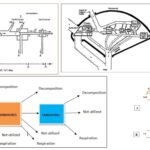How to calibrate pipettes?
How to calibrate pipettes?
Please login to submit an answer.
Calibrating a pipette involves ensuring it dispenses the correct volume of liquid as indicated. The calibration process typically uses distilled water and a high-precision balance. Begin by cleaning the pipette and attaching a clean pipette tip. Set the pipette to a known volume, such as 1 mL, and aspirate the liquid into the pipette. Next, dispense the liquid into a pre-weighed container and weigh it. Since 1 mL of distilled water weighs approximately 1 gram, compare the actual weight of the dispensed liquid with the expected weight. If the weight is different, the pipette is out of calibration and needs to be adjusted. Repeat this process for multiple volumes to ensure the pipette is accurate across its range. Calibration should be done regularly to maintain pipette accuracy, particularly in scientific research or clinical applications.
- Share on Facebook
- Share on Twitter
- Share on LinkedIn
Helpful: 0%




